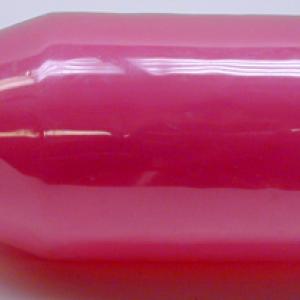College of Liberal Arts & Sciences
2B35.45 - Balloon Barometer
Insert the balloon into the bottle before you blow it up and poke the neck of the balloon through the neck of the bottle. Stretch the balloon as you blow it up in the bottle and blow it up until 2 or 3" extend out the end of the bottle. Changing altitude by several thousand feet will cause the balloon volume to expand or contract by a measurable quantity.
- Bing-Hong Ku, Chyong-Sun Chen, "The Jar Magic - Instructional Activities for Teaching Air Pressure", TPT, Vol. 51, # 9, Dec. 2013, p. 557.
- John C. Salzsieder, "Atmospheric Pressure Indicator", TPT, Vol. 33, # 4, p. 224, 1995.
- Chu E-qing, "A Demonstration to Show the Variation of Atmospheric Pressure with Height", TPT, Vol. 24, # 6, p. 354, September 1986.
- Janice VanCleave, "7, Barometer", Teaching the Fun of Physics, p. 18.
Disclaimer: These demonstrations are provided only for illustrative use by persons affiliated with The University of Iowa and only under the direction of a trained instructor or physicist. The University of Iowa is not responsible for demonstrations performed by those using their own equipment or who choose to use this reference material for their own purpose. The demonstrations included here are within the public domain and can be found in materials contained in libraries, bookstores, and through electronic sources. Performing all or any portion of any of these demonstrations, with or without revisions not depicted here entails inherent risks. These risks include, without limitation, bodily injury (and possibly death), including risks to health that may be temporary or permanent and that may exacerbate a pre-existing medical condition; and property loss or damage. Anyone performing any part of these demonstrations, even with revisions, knowingly and voluntarily assumes all risks associated with them.
